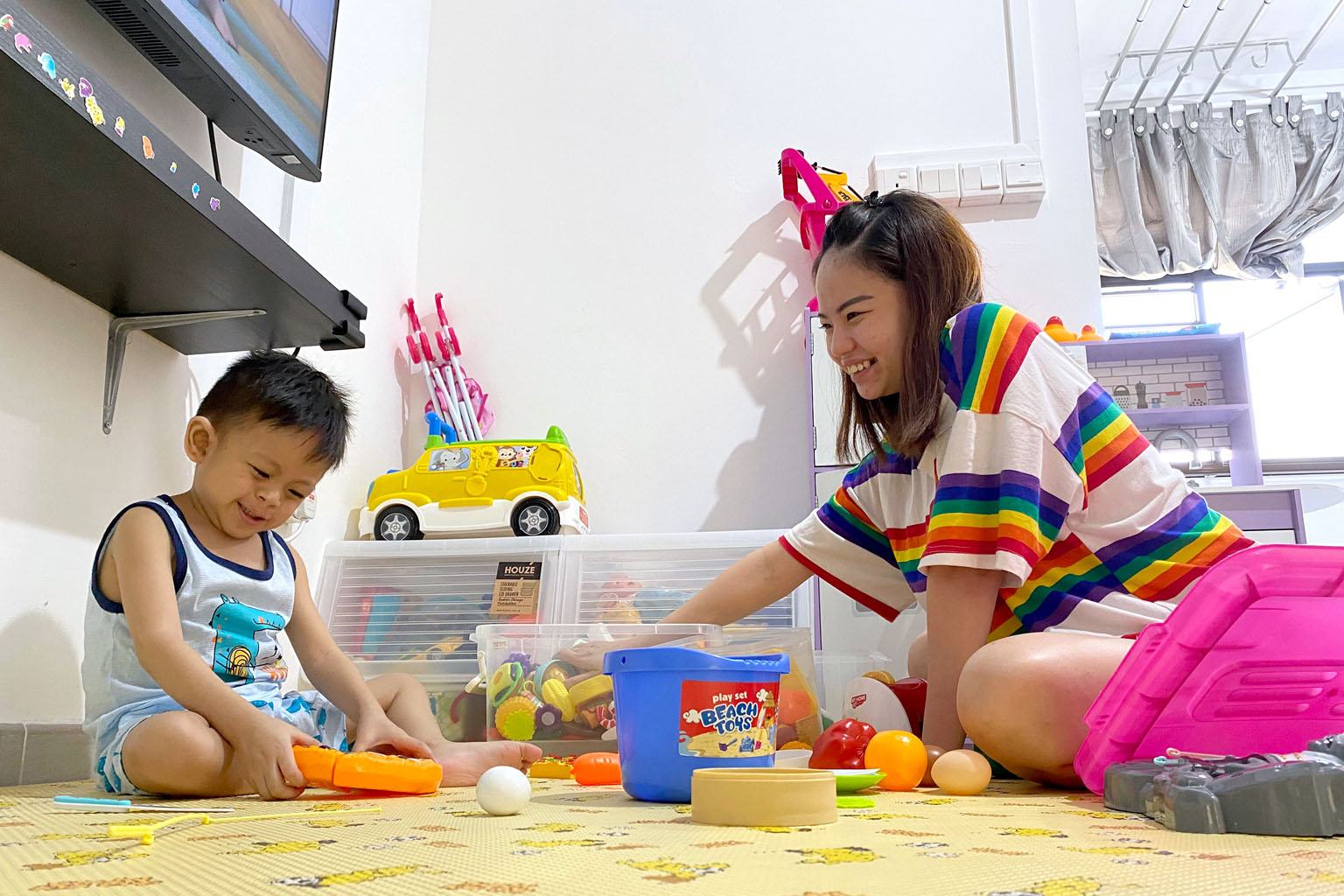Keyhole surgery a relief for liver transplant donors
New technique won't cause a long scar and will likely ease fears of potential donors
Sign up now: Get ST's newsletters delivered to your inbox

Housewife Sophia Chua, 31, donated a part of her liver to her son Xavier, four, and she underwent a minimally invasive operation in August last year. Ms Chua would have had the open surgery anyway to save her son but thankfully she did not have to.
PHOTO: NUH
Joyce Teo Senior Health Correspondent, Joyce Teo
Follow topic:
When Ms Sophia Chua heard her three-year-old son's liver was failing, she broke down and cried: "I just want to save his life."
The 31-year-old volunteered to donate part of her liver, using a pioneering technique.
Not only was the operation a success, but the less invasive approach also meant the housewife avoided being left with a long scar.
A small but growing number of donors in Singapore are being offered the keyhole method, which can seem less frightening.
At present, some potential donors back out after learning that the traditional open surgery technique will leave them with a scar of up to 20-25cm. It is hoped the new, minimally invasive approach will save lives by increasing the number of Singaporeans who agree to donate part of their livers.
Ms Chua would have had the open surgery anyway to save her son but thankfully she did not have to. With the keyhole transplant surgery, the cut made to allow for the extraction of the liver was just 5cm. She also recovered faster.
Her son Xavier, now four, was born with a rare condition known as biliary atresia, where the bile is trapped inside the liver, causing damage and scarring.
His condition had deteriorated to the point where he needed a liver transplant.
The operation was performed in August last year, not long after the Government allowed the resumption of elective transplants, which were put on hold when Covid-19 cases were high.
Living donors like Ms Chua who have this type of surgery leave the operating theatre with just a 5cm to 7cm scar that sits above the pubic region, much like a caesarean section scar. Compared with open surgery, the keyhole method also leaves the patient with less post-operative pain and ensures a shorter recovery time.
Shorter recovery time and less post-operative pain
In Ms Chua's case, Associate Professor Alfred Kow, a senior consultant at the liver transplantation unit at the National University Centre for Organ Transplantation (Nucot), carried out the minimally invasive living donor liver transplant.
He introduced the procedure at Nucot in November 2017, after learning the method, known as laparoscopic donor hepatectomy, in South Korea.
The country is a leader in this field, with more than 500 operations logged.
Since then, he and the team at National University Hospital (NUH) have performed 15 such transplants, of which eight involved children receiving the livers.
Over at the SingHealth Duke-NUS Transplant Centre, the first laparoscopic donor hepatectomy for living donor liver transplant was performed in March 2019.
45
Number of people as at June last year, who were on the waiting list for a liver, unchanged from the end of 2019.
In a paediatric living donor transplant, where an adult donor is giving away a part of the organ to a child, surgeons will cut the left section of the liver. This provides a smaller portion than is needed for an adult transplant, which involves cutting the bigger right lobe.
Prof Kow is hopeful that the increased success with this method will encourage more people to step forward as donors.
As at June last year, there were 45 people on the waiting list for a liver, unchanged from the end of 2019.
The average wait time for a liver from a deceased donor is nearly 20 months, and some people die while waiting.
Patients who need living donors usually ask friends and family members, though in recent years some have also turned to social media.
Since 2018, NUH has seen an average of 30 to 50 patients a year with either liver failure or liver cancer. To play it safe for now, not everyone will be offered the minimally invasive method.
Around 10 to 20 per cent of donors may be suitable. Donors whose liver graft is too large or who are overweight and have limited space in the upper abdomen, will not be offered it.

